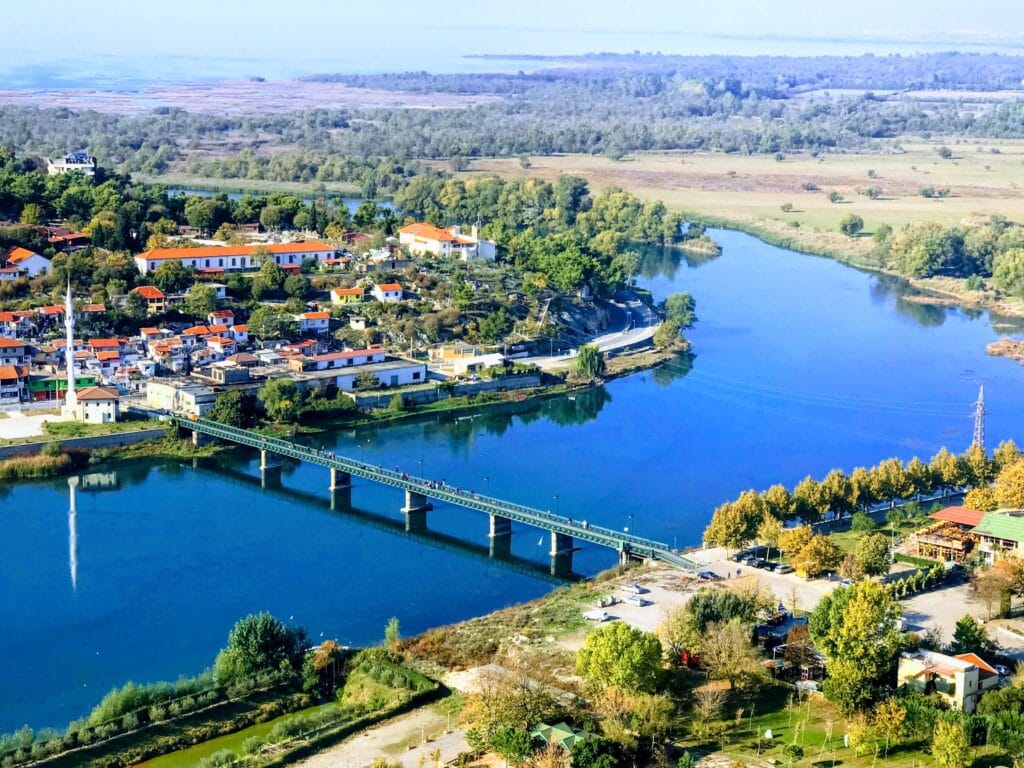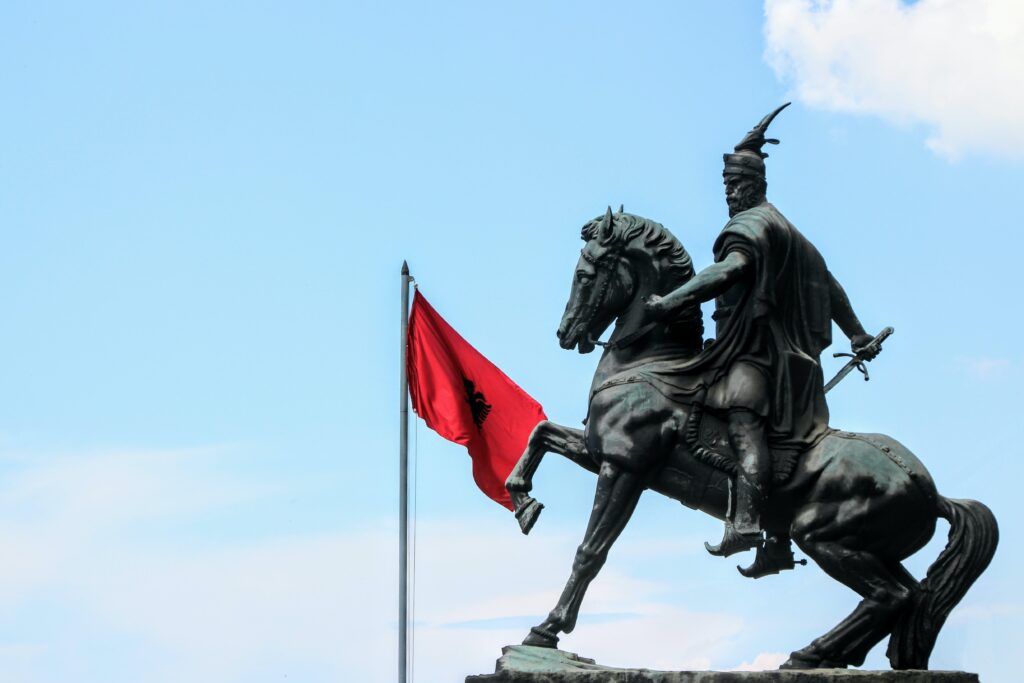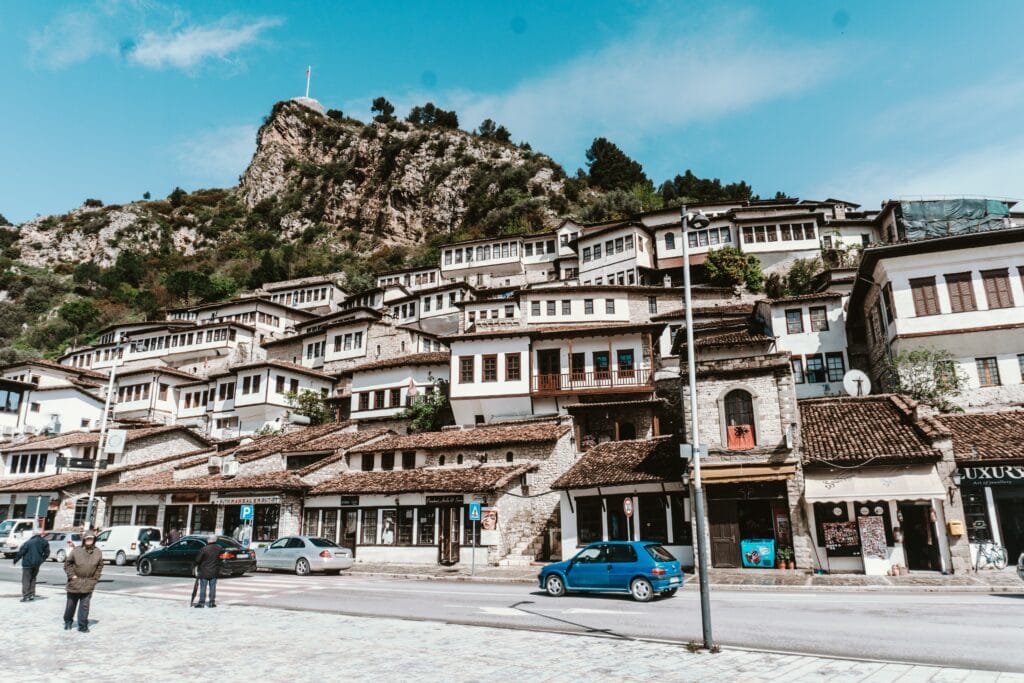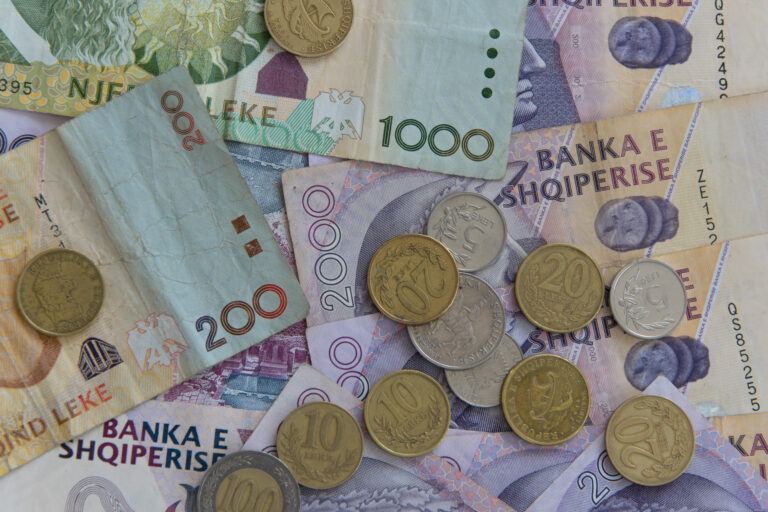If you are working abroad and want to send money home to Albania, or if you’re planning a trip to this southern European country, you may need to turn your USD, CAD, euros, or pounds into Albanian lek.
To see the current lek-to-dollar exchange rate, check out today’s rate with Remitly.
The Albanian lek (ALL) is the official currency of Albania. The symbol for the lek is “L.” The lek was once subdivided into 100 qindarka or qintars, but qindarka are no longer issued. The Albanian lek is issued by the Bank of Albania.
- Banknotes are printed in the following denominations: 200 L; 500 L; 1,000 L; 2,000 L; 5,000 L; and 10,000 L.
- Coins are minted in the following denominations: 5 L, 10 L, 20 L, 50 L, and 100 L.
An approximate exchange rate is 1 USD to 110 L, or 1 euro to 120 L.
5 Interesting Facts About the Albanian Lek
1. It is Albania’s first official currency.
The lek was introduced as the first Albanian currency in February 1926. Prior to 1926, Albania was a country without its own currency, its citizens relying on gold and foreign-issued money.
The lek was first introduced by Albanian King Ahmet Zoghu. Bronze, nickel, and silver coins were minted and issued in denominations of 5 and 10 qindarka.
2. The lek is named after Alexander the Great.
The lek was named after Alexander the Great, as the shortened form of his name is Leka in Albanian.
3. During foreign occupations, the imagery on the lek changed.
When Albania was under Italian control in 1939, Albanian imagery on the lek was replaced with Italian imagery. Coins were issued with a portrait of Italian King Victor Emmanuel III, with an Albanian eagle on the other side. The imagery changed again after World War II after the Communist Party took power, this time featuring the socialist nationalist crest.

4. Today’s Lek banknotes feature prominent Albanians and are color-coded.
In 2019, the Bank of Albania issued a new series of banknotes with enhanced security features and new colors and images.
- 200 L: This brown banknote features Naim Frasheri, an Albanian poet, on the front and his birthplace on the back.
- 500 L: This blue bill (as seen in the photo above) features Ismail Qemali, the first Prime Minister of Albania, on the front and the Vlore National Museum of Independence on the back.
- 1,000 L: This green banknote features Pjeter Bogdani, an Albanian writer, on the front and the Church of Vau on the back.
- 2,000 L: This purple bill features Illyrian King Gent on the front and the ancient amphitheater at Butrint on the back.
- 5,000 L: This yellow banknote features Skanderberg (born Gjergj Kastrioti), an Albanian war hero, on the front and Kruja Castle on the back.
- 10,000 L: This orange bill features Asdreni, the Albanian poet who authored the poem that became the national anthem, on the front and the Albanian flag on the back.

5. The lek may soon be replaced by the euro.
Albania applied for membership in the European Union and is currently considered to be a “candidate country.” In 2009, Albania submitted its formal application for EU membership, and as of 2021 it was in talks to begin the formal ascension into membership status. If accepted, Albania may one day adopt the euro as its official currency, rendering the lek obsolete.
About Albania
Albania is a country located in southern Europe on the Balkan peninsula, bordering Greece to its south, Macedonia and Kosovo to its east, and Montenegro to its north. Albanians refer to themselves as “shqiptarë” — often taken to mean “sons of eagles,” though it may well refer to those associated with the “shqip” language — and they refer to their country as “Shqipëria.”
Albanians often consider themselves to be descendants of the ancient Illyria civilization, whose territory once extended from the Danube River to the Adriatic Sea and the Sar Mountains.
Albania is home to over 3 million people, with about half a million people living in the capital city of Tirana and roughly 60% of the country living in urban settings. Over 82% of the country’s population identifies as ethnically Albanian.
The Albanian language, shqip, descends from the Illyrian language and is the only surviving member of its branch of the Indo-European language family tree.
As a result of nearly five centuries under Ottoman rule, Albania is a predominately Muslim country today. In Albania, 56.7% of the population identifies as Sunni Muslim and 2.1% identifies as Bektashi Muslim. Other religious populations include Roman Catholics (10.0%) and Orthodox Christians (6.8%).
Today Albania’s major industries include oil and gas, textiles and clothing, hydropower, and tourism.

Sending Money to Albania
You can send money to Albania with Remitly. New customers may be eligible for a special offer on their first transfer.
Further Reading
Visit Remitly for information on popular Ramadan foods around the world, everything you need to know about inflation, and how to send money in your preferred language with the Remitly app.
